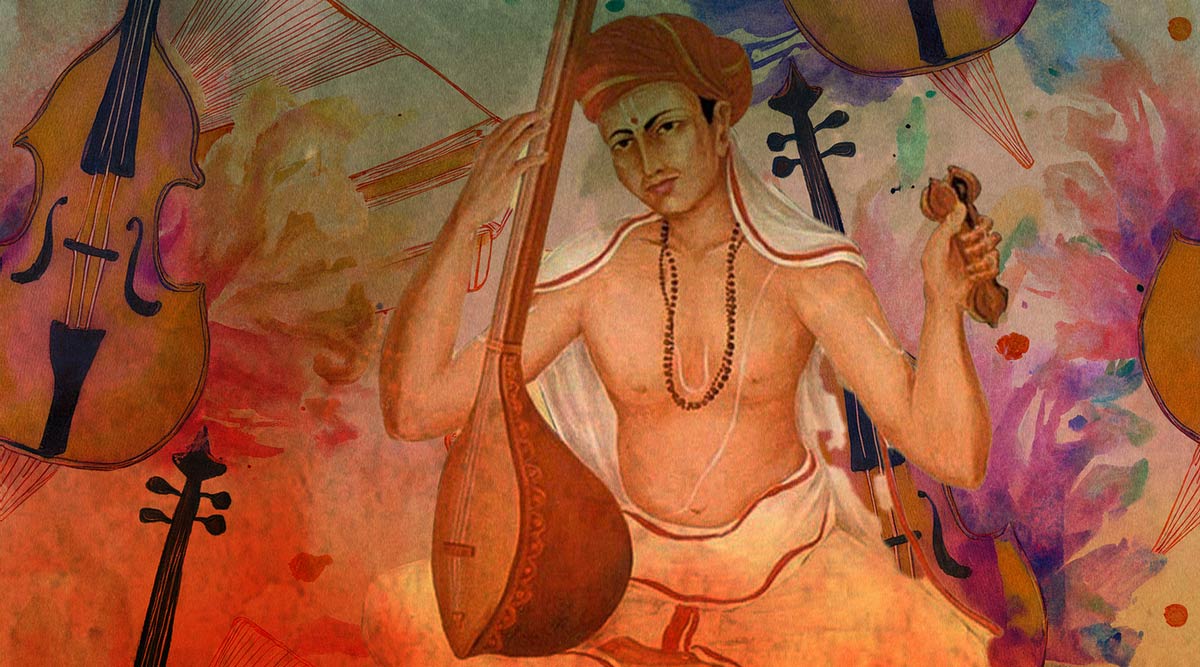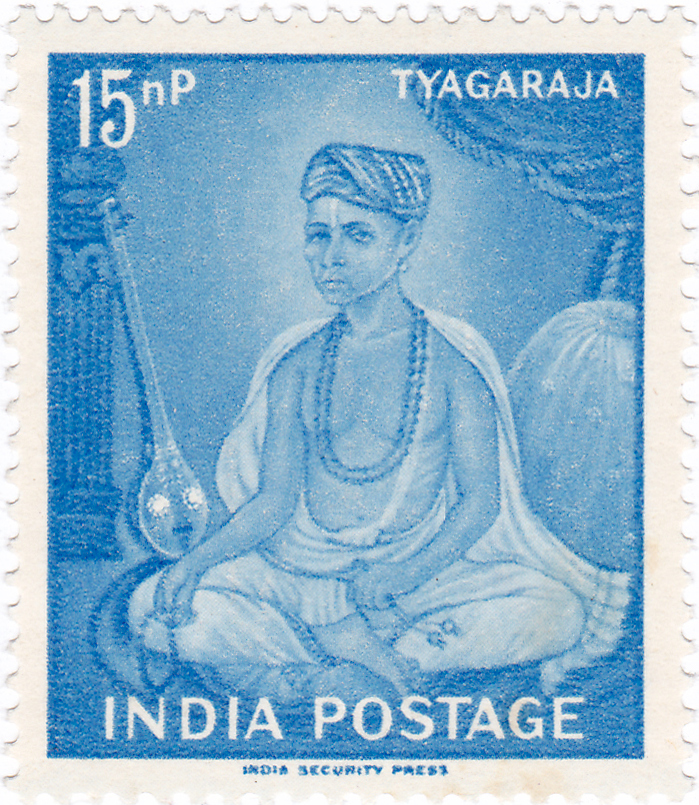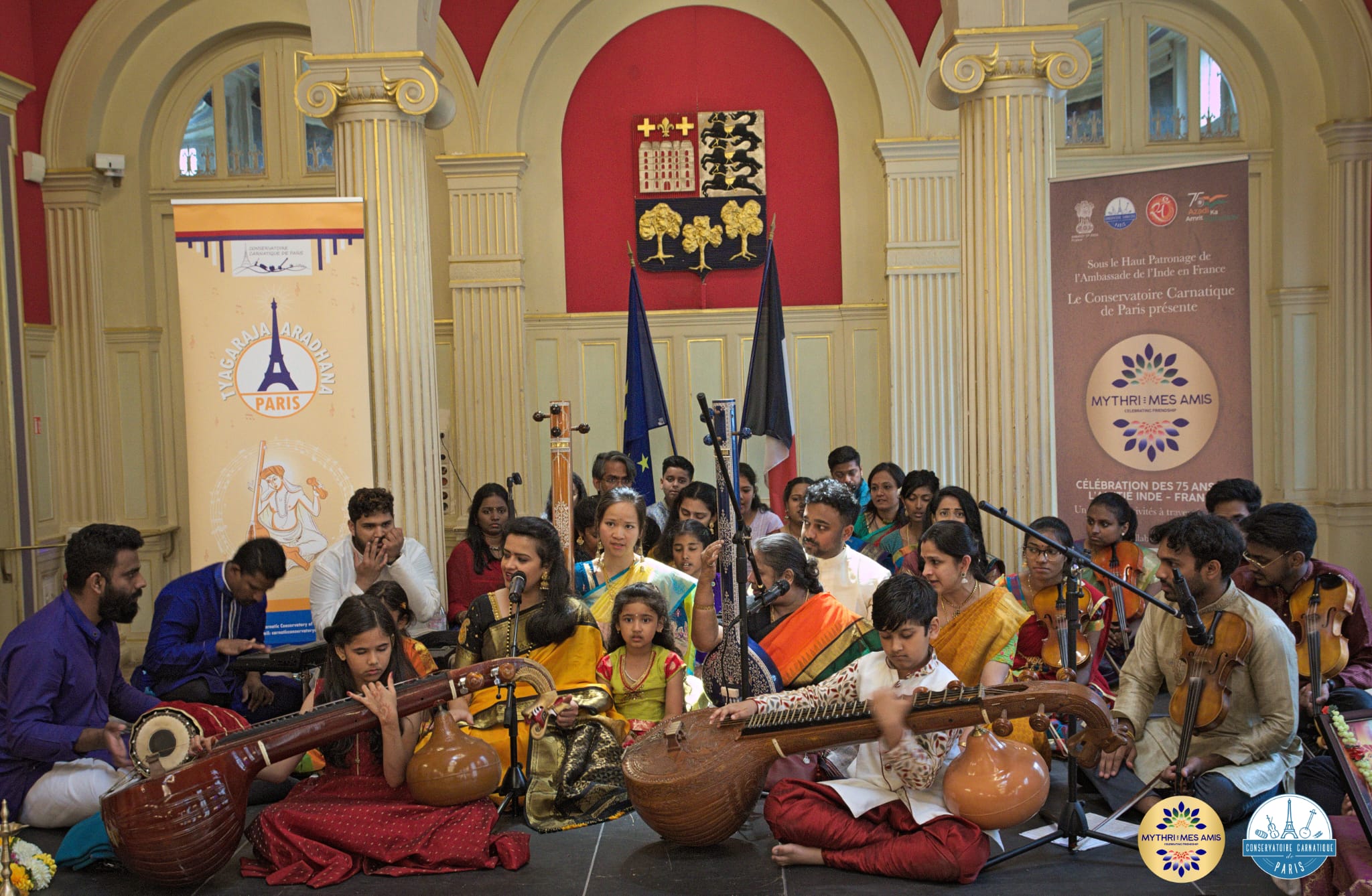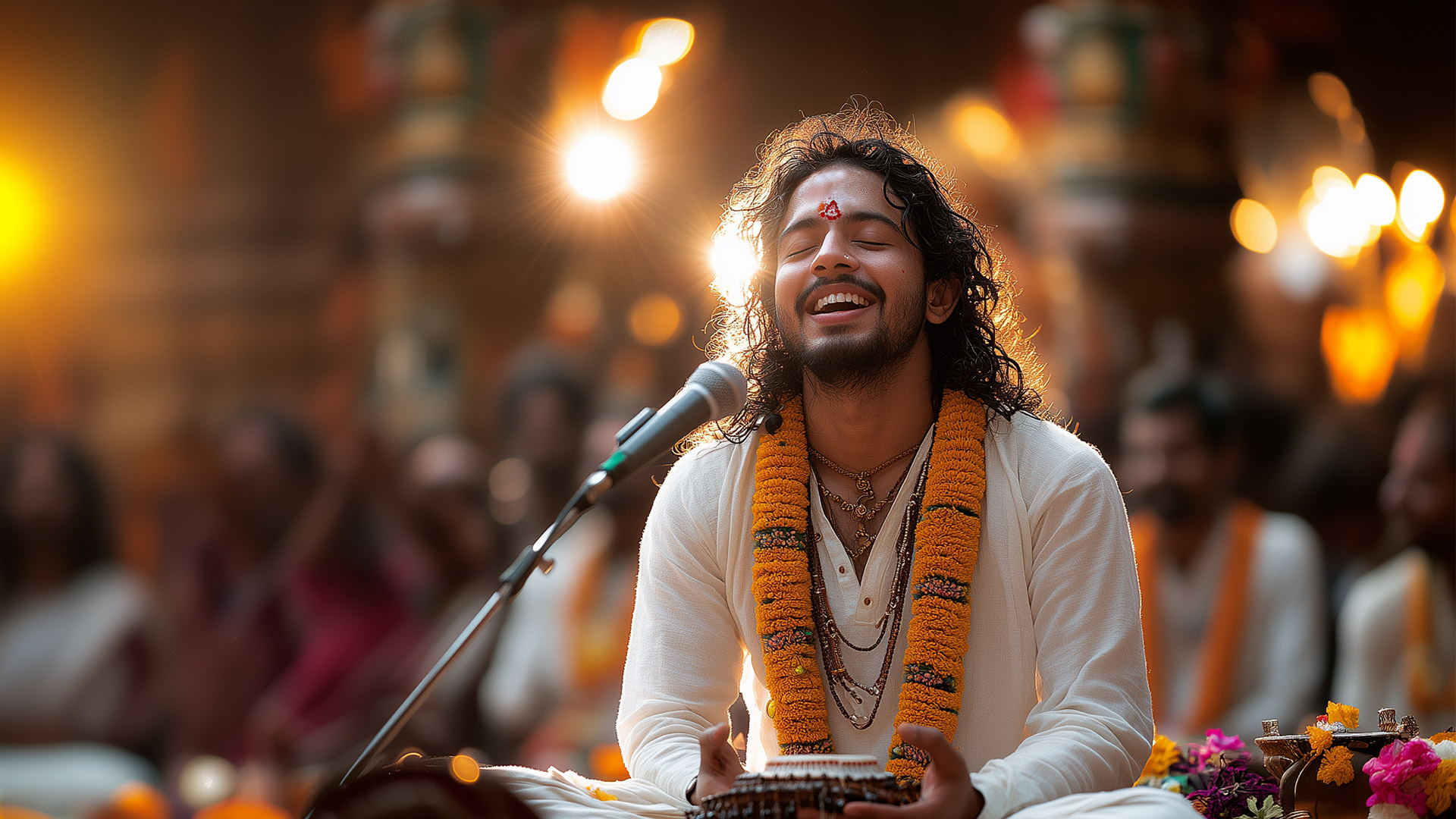![]()
Sri Tyagaraja Swami: The Saint Composer Who Revolutionized Carnatic Music

Table of Contents
Introduction
Sri Tyagaraja Swami (1767–1847) stands as a towering figure in Carnatic music. A composer, poet, and spiritual seeker, his works are imbued with devotion and musical brilliance. His compositions, primarily in Telugu, continue to resonate in concerts and spiritual gatherings worldwide.

Source: Wikimedia Commons
Early Life and Musical Journey

Image: Thiruvaiyaru Temple, where Tyagaraja spent much of his life. Source: Wikimedia Commons
Born as Kakarla Tyagabrahmam on May 4, 1767, in Thiruvarur, Tamil Nadu, Tyagaraja was immersed in music from a young age. He was initiated into music by his father, and later studied under Sonti Venkataramanayya, a respected musician of his time. Tyagaraja’s musical gifts were evident early on, but what set him apart was his deep inner calling toward nada yoga—the spiritual path through music. Tyagaraja’s deep devotion to Lord Rama became the central theme of his life and compositions. He chose a life of simplicity in Thiruvaiyaru, composing music as an offering to the divine rather than seeking royal patronage.
A Composer Guided by Bhakti
Unlike many court musicians of his era, Tyagaraja refused royal patronage, including an invitation from the King of Thanjavur. For Tyagaraja, music was not a profession but a divine sadhana (spiritual practice). His devotion to Sri Rama was total—every song he composed was an offering, every raga a prayer.
One of his most famous compositions, “Nidhi chala sukhama?” in Kalyani raga, reflects this sentiment beautifully:
“Is wealth true happiness? Can riches ever bring the joy that comes from singing Rama’s name?”
Musical Contributions: A Legacy of Eternal Resonance
Tyagaraja composed in Telugu, his mother tongue, making his lyrics accessible and emotionally resonant. He is believed to have composed over 24,000 kritis, though only around 700 are known and documented today.
His compositions spanned a wide range of ragas and talas, with exceptional creativity in raga alapana, neraval, and kalpana swara. His kritis are pedagogically structured and spiritually rich—many students of Carnatic music learn Tyagaraja’s kritis as foundational material.
Pancharatna Kritis (Five Gems)
Among his most revered works are the Pancharatna Kritis, composed in praise of Lord Rama. These are:
- Jagadananda Karaka – Raga: Nata, Tala: Adi
- Dudukugala Nanne – Raga: Gaula, Tala: Adi
- Sadhinchene O Manasa – Raga: Arabhi, Tala: Adi
- Kanakana Ruchira – Raga: Varali, Tala: Adi
- Endaro Mahanubhavulu – Raga: Sri, Tala: Adi
Among them, “Endaro Mahanubhavulu” is particularly famous and was supposedly the composition that earned him the admiration of Shyama Shastri and Muthuswami Dikshitar, his contemporaries in the famed Carnatic Trinity.
These compositions are traditionally performed during the annual Tyagaraja Aradhana festival in Thiruvaiyaru. Every year, in the Tamil month of Thai, on the Pushya Bahula Panchami day, thousands of musicians gather in Thiruvaiyaru to sing his Pancharatna Kritis in unison—a celebration of devotion, music, and legacy.
This tradition has transcended geographical boundaries and is now observed globally—from Chennai to California.
Philosophical Themes
Tyagaraja’s compositions delve into various philosophical and devotional themes:
- Bhakti (Devotion): Expressing unwavering devotion to Lord Rama.
- Moksha (Liberation): Seeking spiritual liberation through music and devotion.
- Nishkama Karma (Selfless Action): Emphasizing actions without attachment to results.
His kritis often reflect personal dialogues with the divine, conveying deep emotional and spiritual experiences.
Tyagaraja Aradhana: A Living Tradition

Image: Musicians performing at Tyagaraja Aradhana. Source: Wikimedia Commons
The Tyagaraja Aradhana is an annual festival held in Thiruvaiyaru to commemorate Tyagaraja’s samadhi. Musicians from around the world gather to perform his compositions, especially the Pancharatna Kritis, in unison. This festival symbolizes the enduring legacy of Tyagaraja’s music and devotion.
Key Milestones
Here are a few defining moments in Tyagaraja’s life and legacy:
- Refusal of Royal Patronage – A bold move that defined his life’s spiritual path.
- Lost and Recovered Idol of Rama – A pivotal spiritual episode where he lost his idol due to family conflict and miraculously regained it through penance and song.
- Musical Pilgrimages – He undertook yatra to holy sites like Srirangam, Kanchipuram, Tirupati, and Bhadrachalam, composing kritis along the way.
- Moksha through Rama Nama – In his final days, he composed the poignant “Giripai Nelakonna” and “Paramatmudu,” and attained Samadhi on January 6, 1847, chanting the name of Rama.
Explore Carnatic Music with Swaramrit
At Swaramrit, we offer comprehensive courses on Carnatic music, including in-depth studies of Tyagaraja’s compositions. Whether you’re a beginner or an advanced student, our courses are designed to deepen your understanding and appreciation of this rich musical tradition.
Conclusion
Sri Tyagaraja Swami’s life and works continue to inspire generations of musicians and devotees. His unwavering devotion, coupled with his musical genius, has left an indelible mark on Carnatic music. As we sing his compositions, we not only celebrate musical excellence but also embark on a spiritual journey guided by his profound insights.
“Without devotion, even knowledge of music cannot lead one on the right path.” — Tyagaraja
START TODAY!
Get a free Carnatic trial lesson now!
Book a One-on-One session with our experienced teachers.

